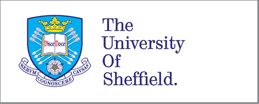Team:Sheffield
From 2010.igem.org
| Line 1: | Line 1: | ||
| - | ::::: Our wiki is currently under construction, but thanks for checking. You can contact us at shefigem@gmail.com | + | ::::: '''Our wiki is currently under construction, but thanks for checking. You can contact us at shefigem@gmail.com''' |
[[Image:Sheffield_team.jpg|centre|frame|Sheffield iGEM 2010 Student Members]] | [[Image:Sheffield_team.jpg|centre|frame|Sheffield iGEM 2010 Student Members]] | ||
Revision as of 14:04, 15 July 2010
- Our wiki is currently under construction, but thanks for checking. You can contact us at shefigem@gmail.com
Project Description
The aim of our project is to create a bacterium that can detect the presence of vibrio cholerae in water. Some bacteria use quorum-sensing. They produce and release autoinducers; signal molecules which vary in concentration as a function of cell density. When a minimal threshold of autoinducer molecules is detected, gene expression is altered. This provides a mechanism for coordinated behaviour within bacterial populations. The detection of autoinducers involves a histidine kinase in the membrane which detects the signal and autophosporylates on a His residue. A phosphate is then transferred to an aspartate residue of a response regulator which relays the signal. We aim to create a fusion protein in E.coli capable of detecting the presence of CAI-1 (cholera autoinducer). This requires fusion of two related receptors with similar topography. The signal is then transmitted down its native pathway. We have chosen 2 similar receptors to create our fusion protein; BarA and CqsS. BarA is a sensory histidine kinase present in the membrane of E.coli. CqsS is a sensory histidine kinase from vibrio cholerae which detects CAI-1. We aim to fuse the N-terminal (receptor) domain of the CqsS (which detects CAI-1 and autophosphorylates) with the C-terminal (transmitter) domain of BarA (which accepts a phosphate and relays the signal downstream. We will then insert the recombined BarA gene into a high copy plasmid. An alternative is to transform the whole CqsS pathway into E.coli. Phosphorylation of the BarA/CqsS causes the phosphorylation of the response regulator UvrY, which then binds to DNA causing transcription of CsrB (a small regulatory RNA). CsrB inhibits CsrA which, in turn, inhibits certain genes. These genes are part of the pgaABCD operon, a 4 gene locus in E.coli. Upon CAI-1 detection by the fusion kinase, transcription of CsrB causes inhibition of CsrA therefore relieving the inhibition of the pgaABCD gene transcription. We want our biosensor to produce a response visible to the naked eye. We plan to insert E.chromi (from the Cambridge 2009 project) into this operon, this will ensure that its expression is controlled by the activity of our fusion receptor causing a pigment to be produced in the presence of the cholera autoinducer. This project has the potential to be expanded to detect many different pathogens. We have chosen vibrio cholerae as an initial proof of concept as it has a specific autoinducer (CAI-1), reducing the chance of interference in the pathway.
| Home | Team | Official Team Profile | Project | Parts Submitted to the Registry | Modeling | Diary | Safety |
|---|
|
|
| |||
|
| ||||
|
The project is currently undefined... but we're working on it! | Team Example |
 "
"

